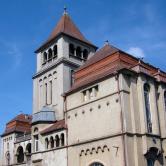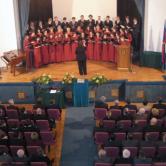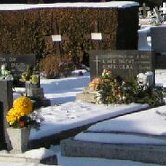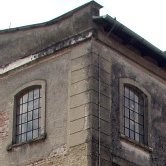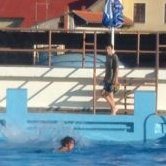Sights > Other Sights
Croatian National Hall
Croatian National Hall is the biggest building within the old core of the town. It was erected in 1914 according to the design of Stjepan Podhorski, a famous architect. The construction took several years, but the original design was never entirely carried out as World War Two broke out. This building stands out for its dimensions, design of the front, and citadel construction. Although built in the neo-romanesque style, the building stands as the most prominent example of the Expressionism of Northern Croatia. Today it houses Music School Albert Štriga, Town Library Franjo Marković, University Extension, as well as four halls for concerts, and other performances.At first, the cemetery spread randomly. However, its current layout is a result of years of designing the entire cemetery planting, layout and buildings, starting from 1900, and today it is an example of the most exquisite cemetery architecture.
Town Cemetery
As the town spread, so did the number ot the people living in it, and the necessity for spreading the cemetery was great. Thus in 1898, a new, expanded cemetery was set up next to the Chapel of St Roch. It is said in the inscriptions that the cemetery should serve to all religions, so by the main entrance there are some graves of Greek Catholic priests, and in 1910 the arcades were built at the very end of the cemetery, marking the site of Jewish part of the cemetery. The arcades were designed by Stjepan Podhorsky. The old Jewish cemetery used to be situated at southern entrance to the town, at a slope near the Church of Our Lady of Koruška. This cemetery was set up in the mid 19th century, and deserted in 1898. Only a few tombstones are all that is left of it today. The main cemetery in Križevci, just like that in Varaždin or Čakovec, is actually a valuable horticultural and monumental complex. There are also tombstones of many prominent individuals from Križevci.In the old Mill House there were 6 shower cabins in which the workers, as well as other local people, took a shower, since there were no public baths in the town at the time. That is how Smičiklas street came to be known as the Bath Street.
Mill House
In 1903 Hinko Švarc, the owner of a wood factory which was burnt to the ground, had the Mill House built on the corner of two streets, Smičiklas and Grdenić street, where it still stands today. He equipped the Mill House with 2 pairs of cylindrical millings, a grinder, and other milling machins. People were bringing their grain to the Mill House until the building and most of the machines were burnt to the ground. Between 1912 and 1913 the Mill House was rebuilt. It was equipped with the machines that were not destroyed in the fire, while most of the machines were repaired- cylindrical millings, grinders, filters... The mill then continued operating until 1927, when the new, upgraded, equipment was introduced. With constantly growing demand for its services, in 1555 a daily capacity of the Mill House was 30 tons. At the time, the steam boiler with the power of 250 kWh was used as the engine not only in the Mill House, but also in the wood factory and saw mill. Wood chips, sawdust, brown coal were used as fuel for steam boilers. A flour warehouse was also built next to the Mill House, in Grdenić street. The Mill was named The First Steam Mill House of Hinko Švarc and Sons. Today, this monument of industrial architecture of the town, is unfortunately in bad condition.In August,1954, there was a Water Polo game between the Egyptian and Yugoslavian team, marking the opening of the Olympic size swimming pool in Križevci. The result is now forgotten, but the memorable game proved that the town was a worthy host of such an international event.
Swimming Pools
The first swimming pool, which was oval in shape and known as the little swimming pool, or the swimming pool for children, was built on the marshland area, close to a pond, in 1952. Building of the swimming pool was initiated by the local authorities and the first Municipal Services directors. Lots of people took their first strokes in this swimming pool, and today there are many children who take swimming classes here during their summer holidays. It was constructed by the local people who volunteered to build it. They put 200 oak tree boles into the marshland area, putting planks and stone blocks on top. In 1954, when the Municipal Service was officially established, another, Olympic size, swimming pool was built. It was designed by Miroslav Plivelić, a civil construction engineer. Not many towns in Europe had two public swimming pools at the time.


